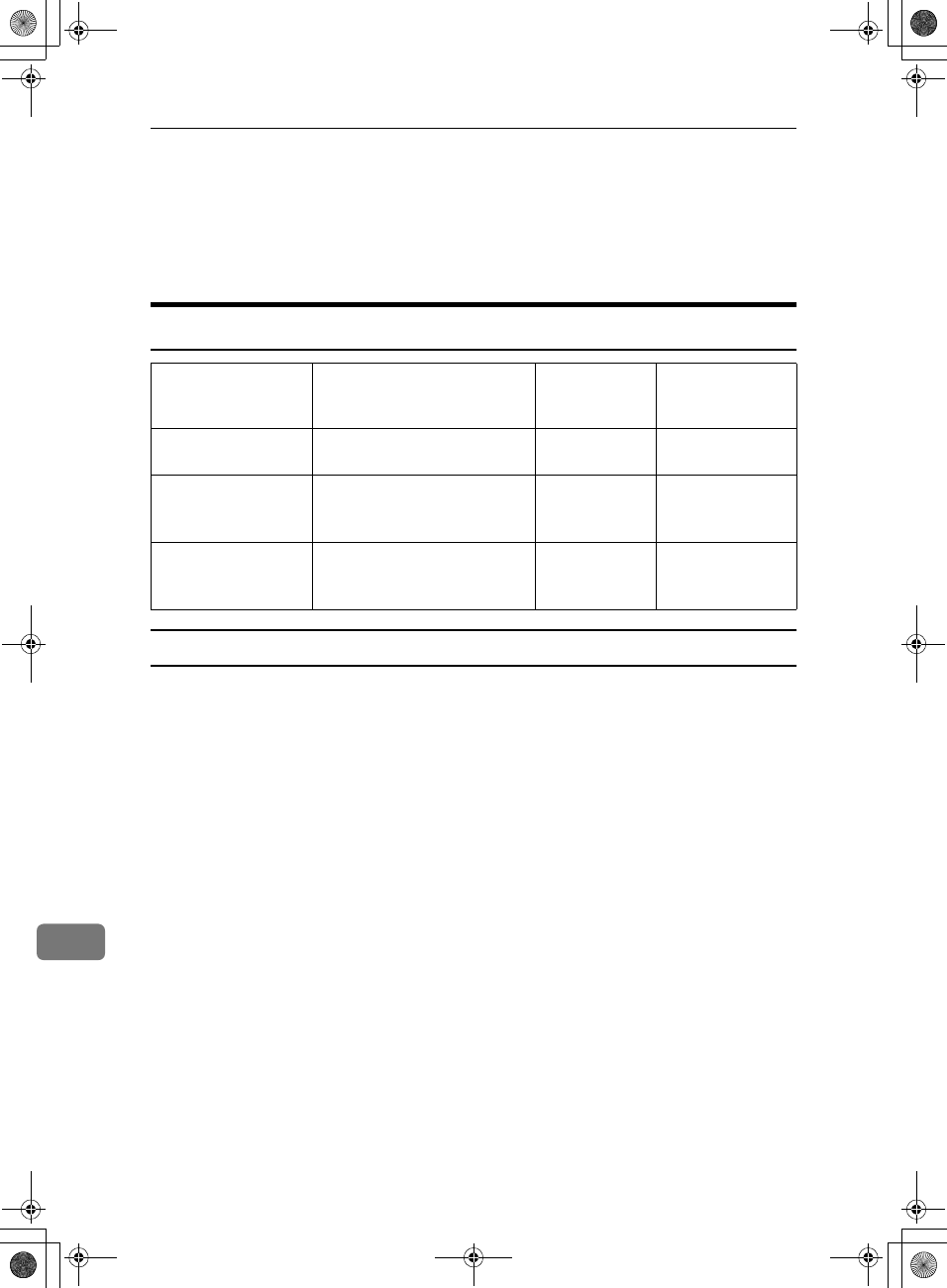
Appendix
192
11
Acceptable Types of Originals
Make sure your originals are completely dry before setting them in the machine.
Originals containing wet ink or correcting fluid will mark the exposure glass and
the resulting image will be affected.
Acceptable Original Sizes
Originals unsuitable for the Document Feeder (ADF)
Do not place the following types of originals in the Document Feeder (ADF) be-
cause they may be damaged. Place them on the exposure glass instead.
• Originals of sizes other than those specified in the previous table
• Originals containing staples or clips
• Perforated or torn originals
• Curled, folded, or creased originals
• Pasted originals
• Originals with any kind of coating, such as thermosensitive paper, art paper,
aluminum foil, carbon paper, or conductive paper
• Originals with index tabs, tags, or other projecting parts
• Sticky originals, such as translucent paper
• Thin and soft originals
• Originals of inappropriate weight (see table above)
• Originals in bound form, such as books
• Transparent originals, such as OHP transparencies or translucent paper
Where Original is Set Acceptable Original Size Maximum
Number of
Sheets
Paper Thickness
Exposure Glass Maximum A3 (297
×
420mm),
11"
×
17" (279
×
432mm)
1----
Document Feeder
(ADF), single-sided
document
Fax transmission: A5
KL
to
A3
L
(up to 1,200mm long)
8"
×
5
1
/
2
"
KL
to 11"
×
17"
L
50 sheets
(80g/m
2
, 20lb)
40–128g/m
2
(35–110kg, 11-34lb)
Document Feeder
(ADF), double-sided
document
Fax transmission: A5
KL
to
A3
L
(up to 432mm long)
8"
×
5
1
/
2
"
KL
to 11"
×
17"
L
50 sheets
(80g/m
2
, 20lb)
52–105g/m
2
(45–90kg, 14–28lb)
RusC2FaxADEN-F_V4_FM.book Page 192 Monday, August 20, 2001 10:52 AM


















